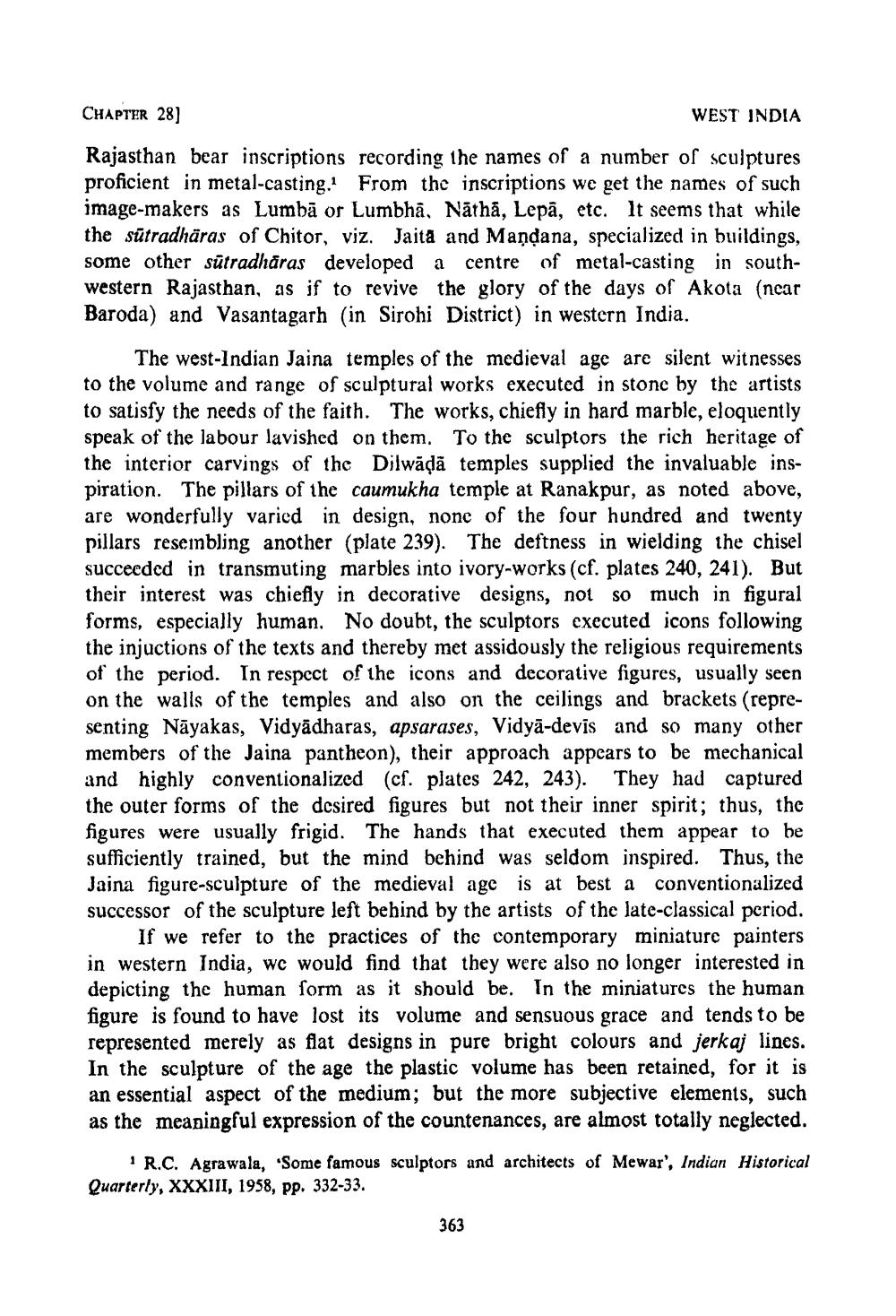________________
CHAPTER 28]
Rajasthan bear inscriptions recording the names of a number of sculptures proficient in metal-casting. From the inscriptions we get the names of such image-makers as Lumba or Lumbha, Nāthā, Lepa, etc. It seems that while the sutradhäras of Chitor, viz. Jaita and Mandana, specialized in buildings, some other sütradhāras developed a centre of metal-casting in southwestern Rajasthan, as if to revive the glory of the days of Akota (near Baroda) and Vasantagarh (in Sirohi District) in western India.
WEST INDIA
The west-Indian Jaina temples of the medieval age are silent witnesses to the volume and range of sculptural works executed in stone by the artists to satisfy the needs of the faith. The works, chiefly in hard marble, eloquently speak of the labour lavished on them. To the sculptors the rich heritage of the interior carvings of the Dilwādā temples supplied the invaluable inspiration. The pillars of the caumukha temple at Ranakpur, as noted above, are wonderfully varied in design, none of the four hundred and twenty pillars resembling another (plate 239). The deftness in wielding the chisel succeeded in transmuting marbles into ivory-works (cf. plates 240, 241). But their interest was chiefly in decorative designs, not so much in figural forms, especially human. No doubt, the sculptors executed icons following the injuctions of the texts and thereby met assidously the religious requirements of the period. In respect of the icons and decorative figures, usually seen on the walls of the temples and also on the ceilings and brackets (representing Nayakas, Vidyadharas, apsarases, Vidya-devis and so many other members of the Jaina pantheon), their approach appears to be mechanical and highly conventionalized (cf. plates 242, 243). They had captured the outer forms of the desired figures but not their inner spirit; thus, the figures were usually frigid. The hands that executed them appear to be sufficiently trained, but the mind behind was seldom inspired. Thus, the Jaina figure-sculpture of the medieval age is at best a conventionalized successor of the sculpture left behind by the artists of the late-classical period. If we refer to the practices of the contemporary miniature painters in western India, we would find that they were also no longer interested in depicting the human form as it should be. In the miniatures the human figure is found to have lost its volume and sensuous grace and tends to be represented merely as flat designs in pure bright colours and jerkaj lines. In the sculpture of the age the plastic volume has been retained, for it is an essential aspect of the medium; but the more subjective elements, such as the meaningful expression of the countenances, are almost totally neglected.
1 R.C. Agrawala, 'Some famous sculptors and architects of Mewar', Indian Historical Quarterly, XXXIII, 1958, pp. 332-33.
363




